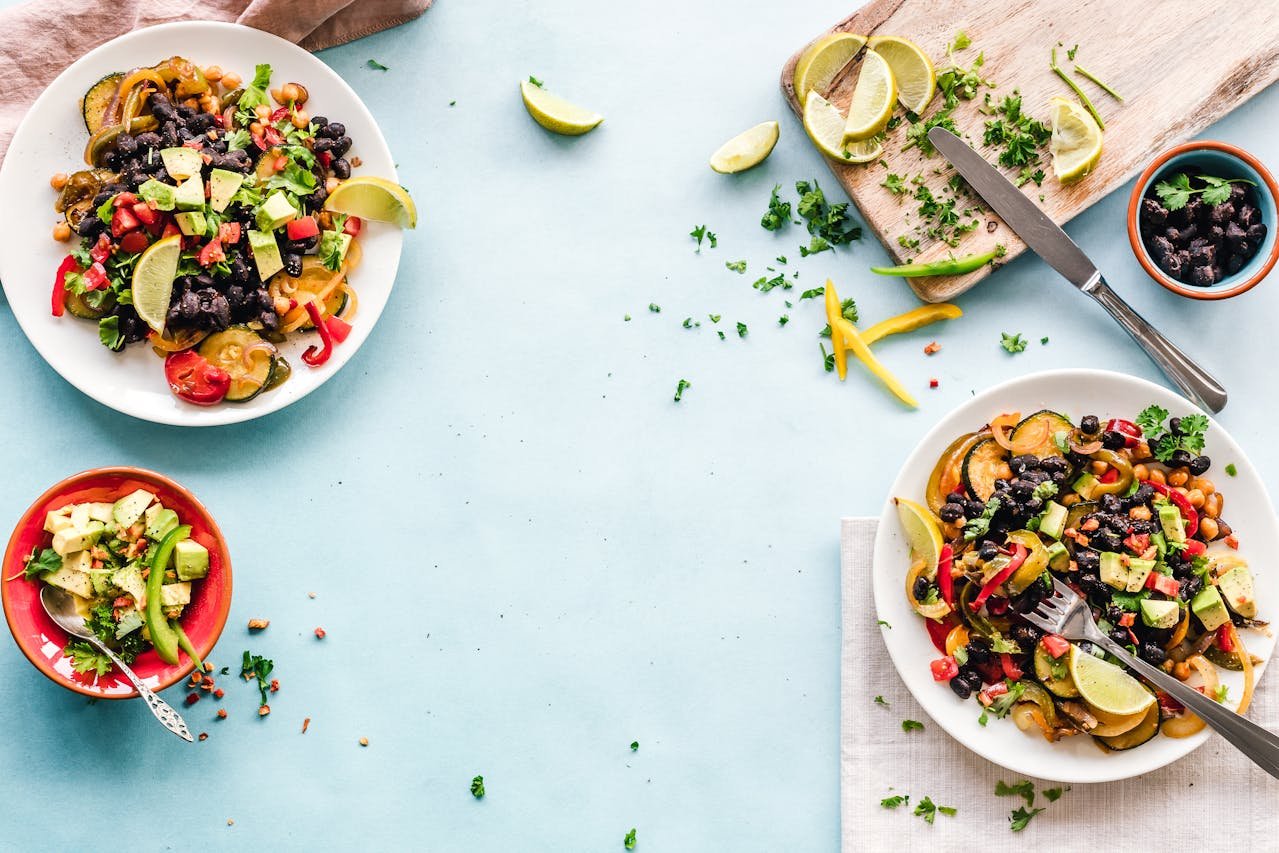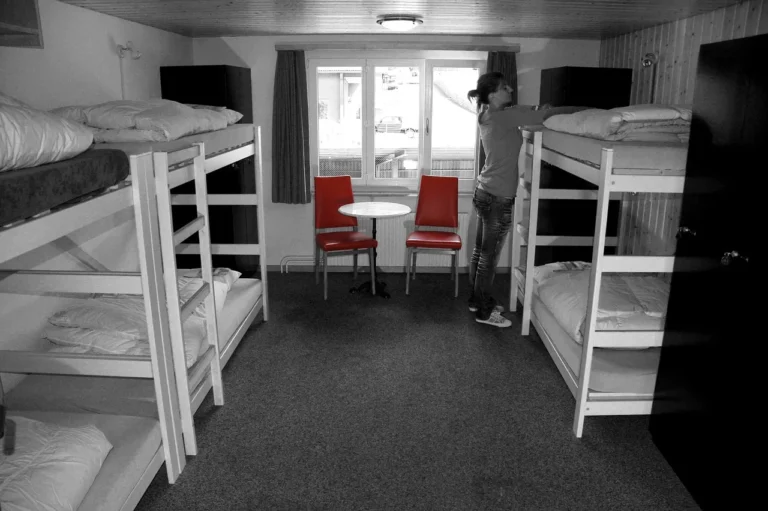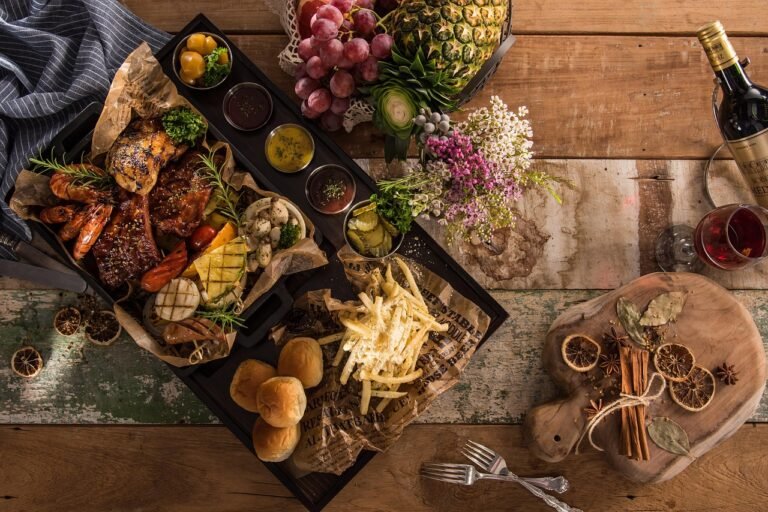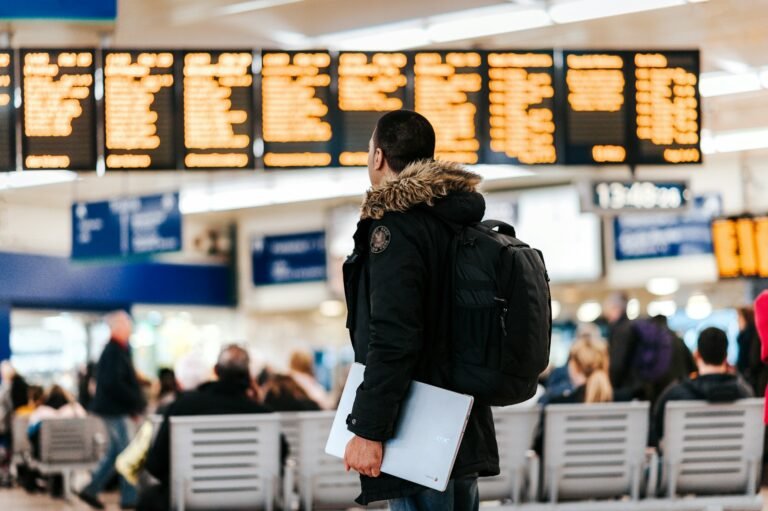Eating well while traveling on a shoestring budget isn’t some mystical art reserved for savvy globetrotters or secret society members. Honestly, it’s a skill—a mix of knowing where to look, what to avoid, and when to embrace the chaos that comes with cheap eats. You can find a killer meal anywhere on the planet without selling your kidney or surviving mainly on instant noodles.
It’s about mastering the dance between flavor and frugality, which, let’s be honest, is a bit like dating. Sometimes the best finds show up unexpectedly. Worst case, you get a memorable story and a less-than-stellar meal—oh well, that’s part of the charm, right? Street food stalls, local markets, hole-in-the-wall joints—they often beat glossy tourist traps at their own game. The trick is spotting them, trusting your instincts (or your nose), and knowing when to say yes or politely decline.
This piece isn’t a rigid blueprint but more like a loose map so you can navigate food on a budget like a pro. Because eating cheap doesn’t mean sacrificing taste or culture—it’s about proving that good food can come with a small price tag, literally anywhere. So, loosen up your wallet without tightening your palate. There’s a lot to savor out there.
The Art of Eating Like You Live There
The biggest mistake most travelers make? Eating like tourists. I get it—you’re tired, overwhelmed, and that restaurant with the English menu right next to your hotel looks so… convenient. But convenience costs, and it usually tastes like cardboard seasoned with regret.
Real budget eating starts with a simple mindset shift: eat where the locals eat, when they eat, and what they eat. This isn’t just some romantic travel blogger nonsense—it’s economics. Local spots don’t need to inflate prices for tourists who’ll never return. They survive on repeat customers who actually know what good food tastes like.
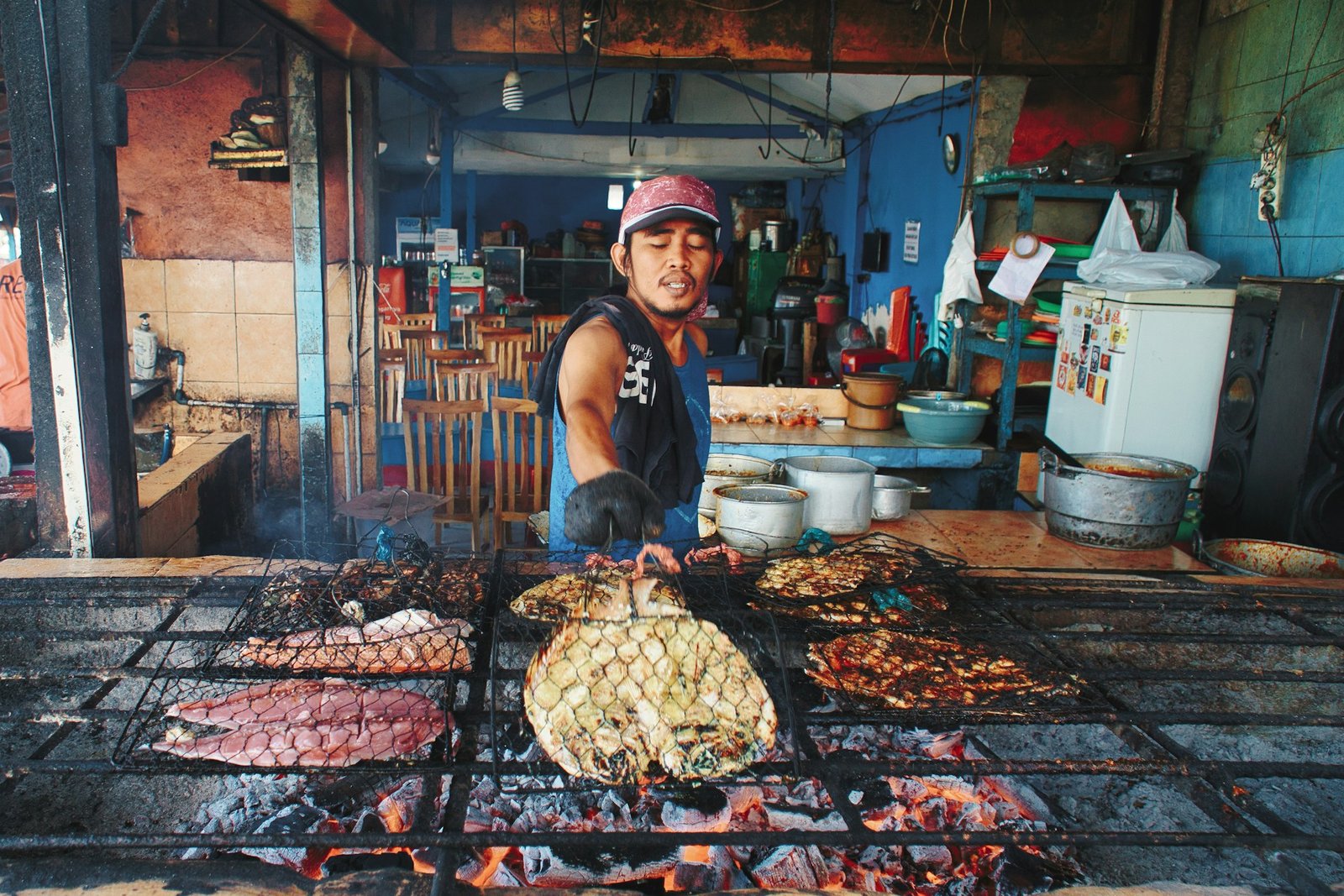
I remember my first morning in Bangkok, wandering around jet-lagged and slightly terrified of the street food scene. Everyone kept telling me about these amazing 50-baht meals, but all I could see were fancy tourist restaurants charging 400 baht for pad thai. Then I noticed office workers lining up at this tiny cart tucked between two buildings. No English menu, no fancy setup—just an elderly woman with a wok and what looked like controlled chaos.
That 40-baht bowl of boat noodles changed everything. Not just because it was delicious (though holy hell, it was), but because I realized I’d been looking in all the wrong places.
Street Food: Your Gateway Drug to Cheap Eating
Street food gets a bad rap from nervous travelers, but honestly? It’s often safer than that sketchy hotel restaurant and always cheaper than anything with tablecloths. The key is knowing what to look for.
High turnover is your friend. If locals are queuing up and the food is moving fast, that means it’s fresh. Avoid places where meat has been sitting under heat lamps looking lonely—that’s a one-way ticket to spending your vacation money on Pepto-Bismol instead of adventures.
Watch for the universal signs of good street food: long lines of locals (especially during lunch rush), visible cooking processes, and vendors who look like they’ve been doing this for decades. That granny who’s been perfecting her dumpling technique since before you were born? She’s your culinary guardian angel.
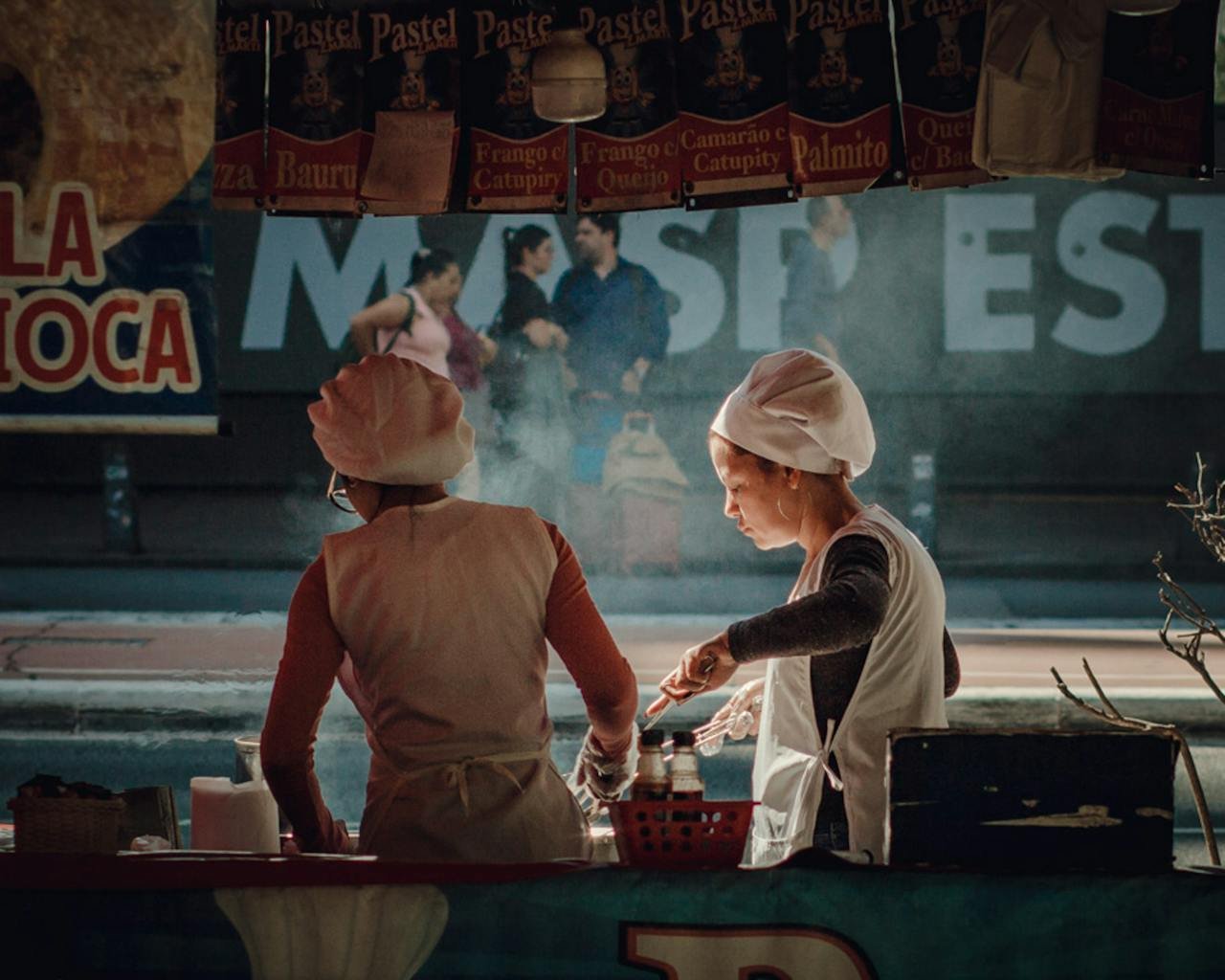
Some of my best meals have cost less than a fancy coffee back home. Vietnam’s banh mi sandwiches for under $2, Mexico’s tacos al pastor for pocket change, India’s dosas that could feed a small village. The world is full of incredible cheap eats—you just need to know where to find them.
Market Intelligence: Shopping Like a Local Pro
Here’s something I wish someone had told me earlier: grocery shopping abroad is an adventure sport. Every country has its own rhythm, its own unspoken rules, and its own way of making you feel like a complete amateur with a shopping cart.
First rule of market club: bring your own bag. Seriously. Nothing screams “tourist tax me extra” like fumbling around empty-handed asking for plastic bags in broken local language. Second rule: observe before you dive in. Watch how locals interact with vendors, how they select produce, how they negotiate (or don’t).
Morning markets are gold mines for fresh, cheap ingredients. Vendors want to move their stock early, prices are at their most reasonable, and you’ll get first pick of the good stuff. Plus, there’s something magical about starting your day surrounded by the controlled chaos of a local market—the colors, the smells, the energy of a community coming to life.
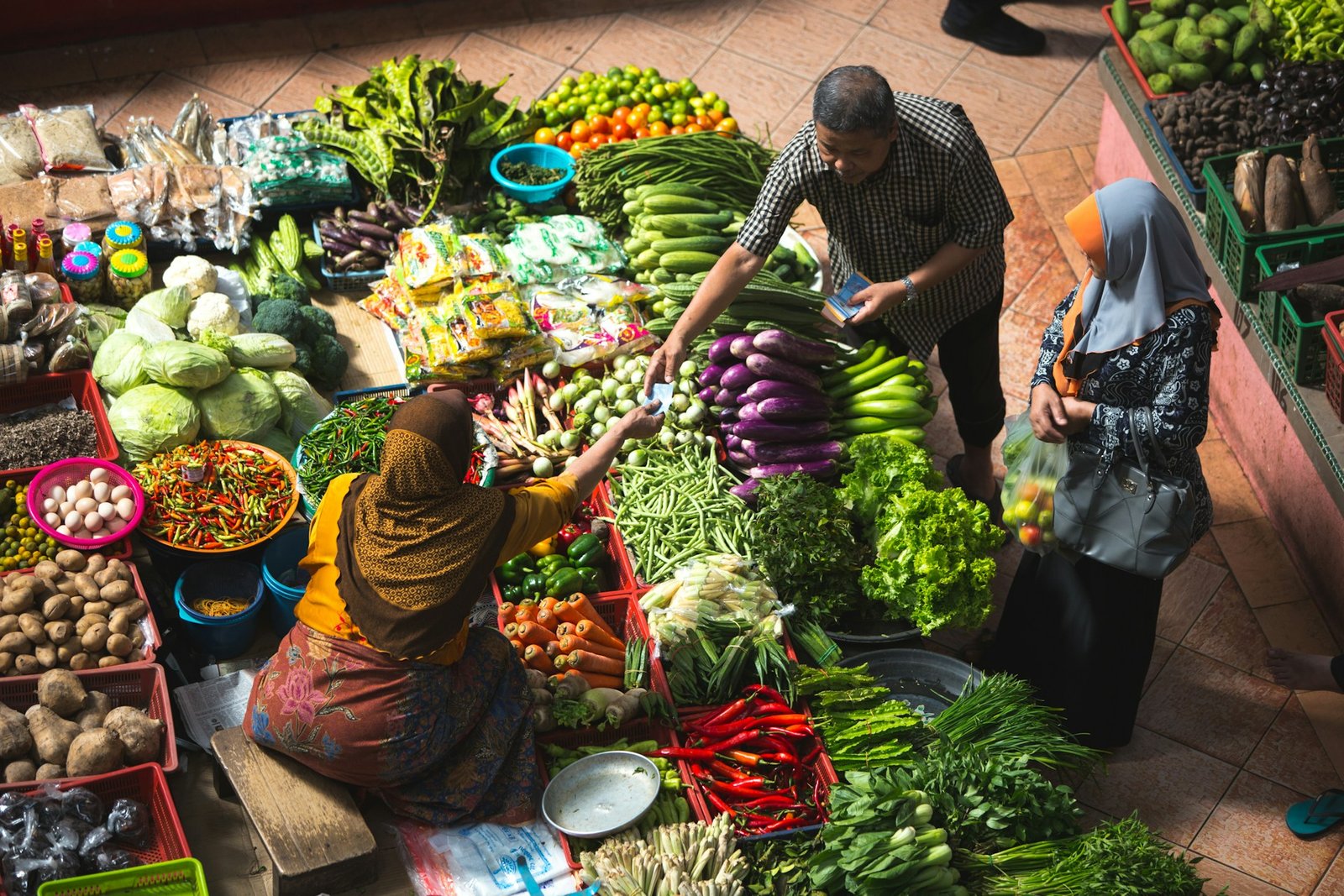
I’ve discovered some of my favorite foods just by pointing at random things and hoping for the best. That weird-looking fruit in Thailand that the vendor insisted I try? Dragon fruit—now I’m obsessed. Those mysterious dumplings in a Polish market? Pure comfort food perfection.
The Hostel Kitchen Chronicles
Ah, hostel kitchens—where culinary dreams go to die and backpacker budgets go to live another day. I’ve cooked some questionable meals in some questionable kitchens, but I’ve also saved hundreds of dollars and made lifelong friends over shared disasters and unexpected successes.
The secret to hostel cooking isn’t being a great chef—it’s being resourceful and social. That half-empty bottle of olive oil someone left behind? Community property. Those herbs growing outside? Free seasoning. That friendly German couple making pasta for six? Time to make friends and contribute some garlic bread.
Stock up on versatile staples: pasta (the universal language of budget travel), rice, eggs, onions, garlic, and whatever local spices catch your fancy. Learn a few simple recipes that work anywhere—fried rice, pasta aglio e olio, scrambled eggs with whatever vegetables are cheap that day.
And please, for the love of all that’s holy, clean up after yourself. Hostel kitchen karma is real, and it will come back to haunt you when you’re desperately craving a home-cooked meal.
Regional Strategies: Playing the Food Game Worldwide
Every region has its own food economy, and smart travelers adapt accordingly. What works in Southeast Asia might bankrupt you in Northern Europe, and what’s expensive in one country could be dirt cheap just across the border.
Southeast Asia: Street food paradise. Eat like a king for under $10 a day. Stick to noodle soups, rice dishes, and fresh fruit. Avoid Western food unless you enjoy paying premium prices for subpar quality.
Europe: Hit up grocery stores and cook for yourself. Markets are great for fresh ingredients, but restaurants will drain your budget faster than you can say “service charge.” Exception: Eastern Europe, where restaurant meals can still be reasonable.
South America: Markets are your best friend. Fresh ingredients are incredibly cheap, and local specialties are both delicious and affordable. Just remember that “spicy” means something very different here than it does back home.
Middle East: Embrace the mezze culture. Small plates, fresh bread, and communal eating make for cheap, satisfying meals. Plus, the hospitality culture means you’ll often be invited to share meals with locals.
Technology: Your Secret Weapon
I used to be one of those “authentic travel experience” purists who refused to use apps or technology. Then I spent $30 on a terrible sandwich in Oslo and had a come-to-Jesus moment about the value of modern convenience.
HappyCow for vegetarian options (often the cheapest meals around), Google Translate for deciphering menus, and local food apps can save you both money and stomach troubles. Even simple currency conversion apps prevent those embarrassing moments when you realize you just paid $15 for what should have been a $3 meal.
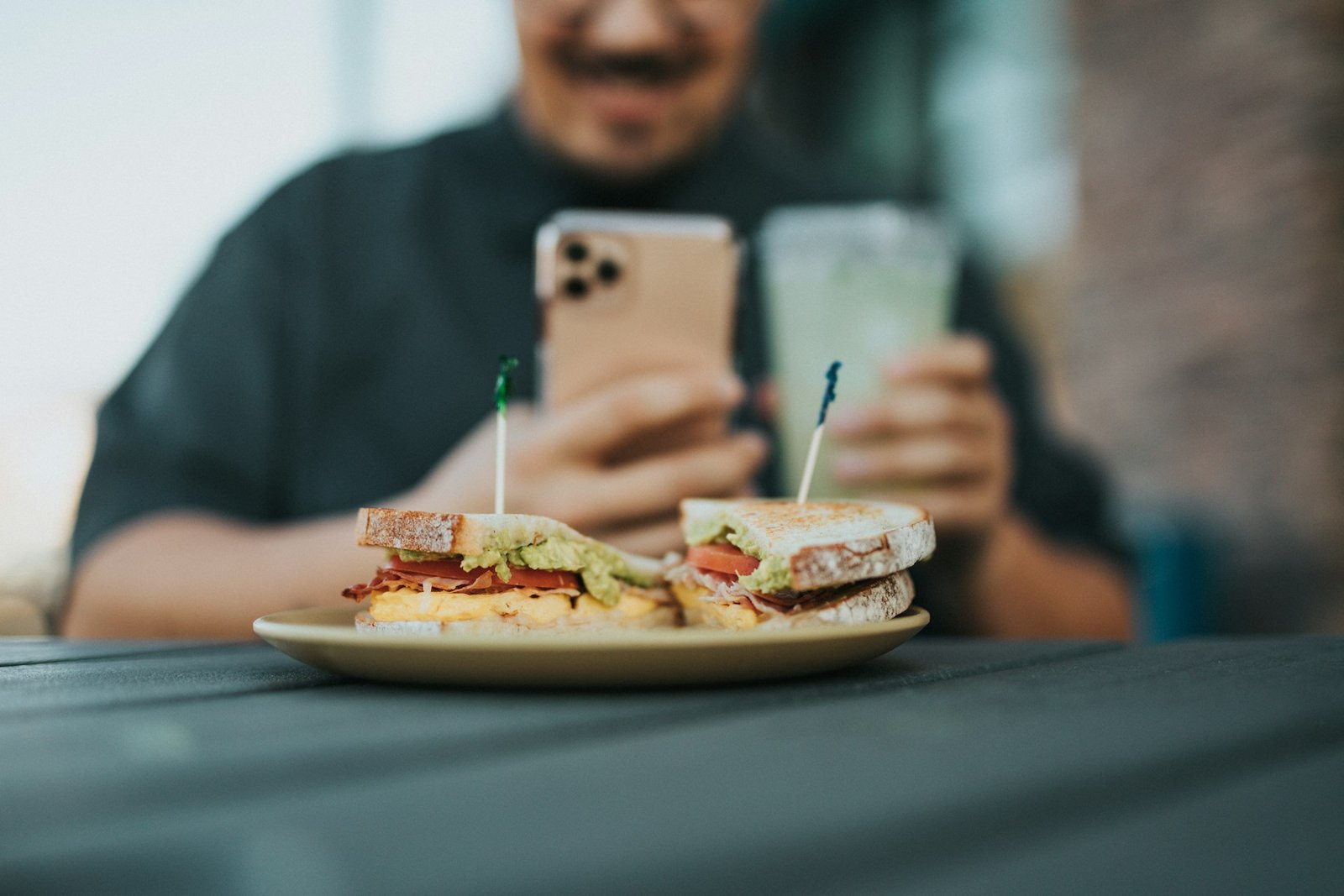
But don’t let technology replace common sense. If an app leads you to a place that looks sketchy or overpriced, trust your instincts over the algorithm.
The Breakfast Game-Changer
Here’s a controversial opinion: hotel breakfasts are usually worth it, even when they seem overpriced. I know, I know—it goes against every budget travel instinct. But hear me out.
A good hotel breakfast can fuel you until late afternoon, especially if you’re the type who strategically loads up on protein and fruit. Some places practically encourage you to make sandwiches for later (looking at you, German hotels with their elaborate bread spreads).
When hotel breakfast isn’t included or available, find local breakfast spots. Coffee shops in most countries offer pastries and simple meals at reasonable prices, and you’ll get a glimpse into how locals start their day.
Navigation Nightmares and Food Triumphs
Let me tell you about the time I got completely lost in the backstreets of Marrakech, phone dead, no Arabic, and approximately three words of French. I was hungry, slightly panicked, and definitely questioning my life choices.
But then I smelled something incredible coming from this tiny hole-in-the-wall place. The owner spoke no English, I spoke no Arabic, but somehow we managed to communicate through pointing, gesturing, and mutual appreciation for food. That tagine—cooked in what was probably a 200-year-old pot—cost me maybe $4 and remains one of the best meals of my life.
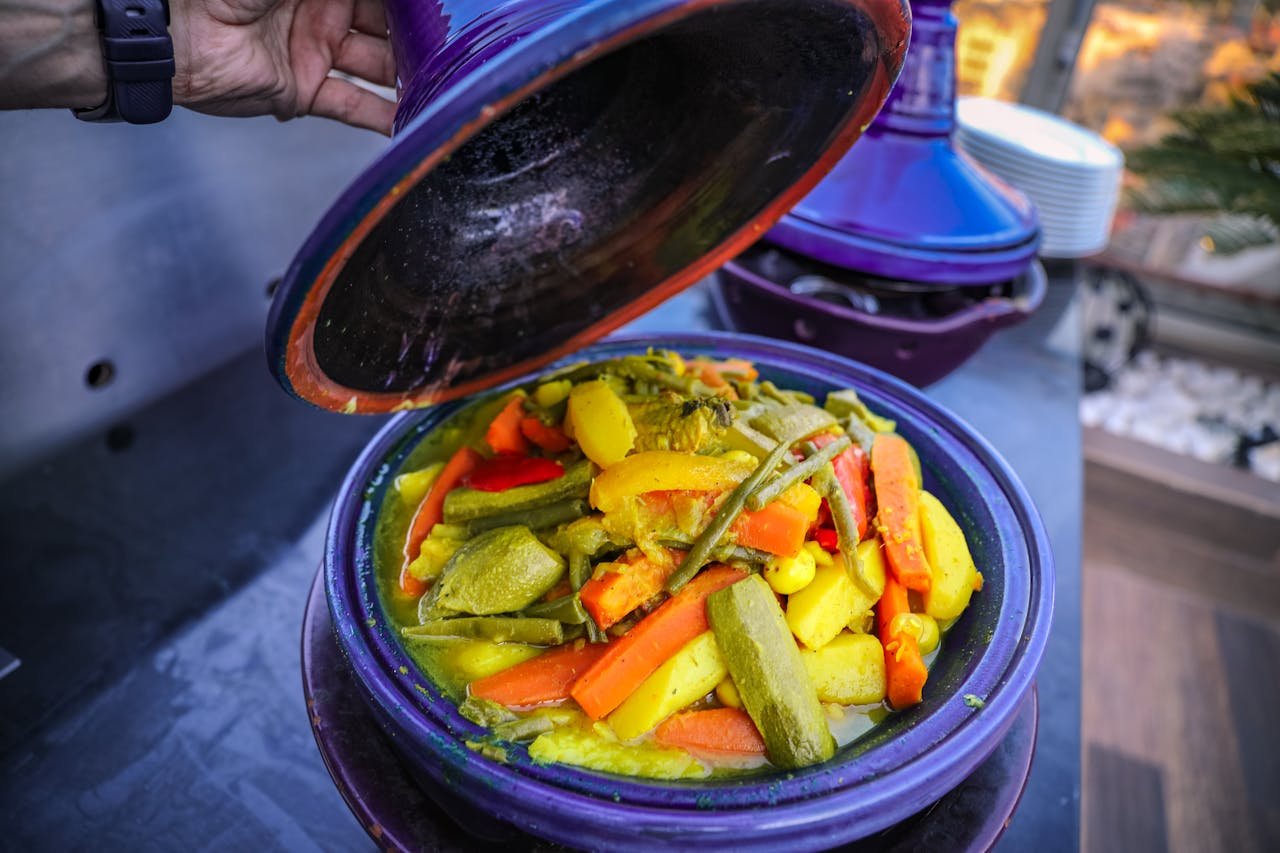
Sometimes getting lost leads you to the best discoveries. Those tourist-free neighborhoods where rent is cheap and locals actually live? That’s where the real food magic happens.
When Things Go Wrong (And They Will)
Food poisoning happens. Bad restaurant choices are inevitable. You will occasionally pay tourist prices for mediocre food because you’re tired, hungry, and just want something familiar. It’s all part of the learning process.
I once spent three days surviving on crackers and bottled water in Delhi because I made some questionable street food choices. But I also discovered some of the best food of my life in that same city once I recovered and learned to be more selective.
Keep basic medications handy, know where the nearest pharmacy is, and don’t be afraid to stick to simple, well-cooked foods when your stomach is feeling temperamental. There’s no shame in eating plain rice and toast when you need to reset.
The Social Side of Budget Eating
Some of my best travel memories revolve around shared meals—cooking disasters with fellow backpackers, being invited to family dinners by strangers, discovering hole-in-the-wall restaurants with new friends. Food is the universal connector, and budget eating often leads to the most authentic social experiences.
Don’t eat alone if you can help it. Strike up conversations with fellow travelers, accept invitations from locals, and be open to trying things that look completely foreign. The worst that can happen is a bad meal and a good story.

Making It Last: Sustainability and Respect
Budget eating isn’t just about saving money—it’s about being a responsible traveler. Support local businesses, respect local customs around food, and remember that your “cheap” meal might represent significant income for the person preparing it.
Tip appropriately (research local customs), don’t waste food, and be patient with language barriers. That vendor who’s trying to explain their specialties to you in broken English? They’re making an effort—return the favor.
Final Thoughts
Eating well on a budget while traveling isn’t about sacrifice—it’s about discovery. Yes, you’ll make mistakes. Yes, you’ll occasionally blow your food budget on something ridiculous. But you’ll also taste things you never knew existed, meet people you never would have encountered, and create memories that no fancy restaurant could ever provide.
The world is full of incredible, affordable food. You just need to know where to look, be willing to step outside your comfort zone, and embrace the beautiful chaos of eating like a local. Your wallet—and your taste buds—will thank you.
Top 20 Budget Eating Travel Tools & Resources
- HappyCow App – happycow.net – Find vegetarian/vegan restaurants worldwide, often the cheapest options
- Google Translate – translate.google.com – Essential for reading menus and communicating with vendors
- XE Currency Converter – xe.com – Avoid overpaying by knowing exact conversion rates
- Hostelworld – hostelworld.com – Find accommodations with kitchen facilities
- Airbnb – airbnb.com – Rent places with full kitchens for longer stays
- Rome2Rio – rome2rio.com – Find cheapest transport to food markets and local areas
- TripAdvisor – tripadvisor.com – Read reviews but focus on local, budget-friendly spots
- Foursquare/Swarm – foursquare.com – Discover local favorites and hidden gems
- OpenRice – openrice.com – Asian restaurant discovery platform
- Zomato – zomato.com – Restaurant reviews and menus in many countries
- Local Food Tours – viator.com – Invest in one food tour to learn where locals eat
- Uber Eats/Local Delivery Apps – Compare restaurant prices and find budget options
- YouTube Food Channels – Research local specialties and where to find them cheap
- Reddit Travel Communities – r/travel, r/solotravel for real budget eating advice
- Couchsurfing – couchsurfing.com – Connect with locals who know the best cheap eats
- WikiTravel – wikitravel.org – Country-specific budget eating guides
- Numbeo – numbeo.com – Compare food costs between cities
- Local Tourism Boards – Official websites with authentic local food recommendations
- Instagram Hashtags – Search #[city]food #localeats for discovering hidden gems
- Lonely Planet Guides – lonelyplanet.com – Reliable budget eating sections for most destinations
Frequently Asked Questions
How much should I budget for food while traveling?
Budget $15-30/day in expensive countries (Europe, Australia), $5-15/day in mid-range destinations (Eastern Europe, parts of Asia), and $3-10/day in budget-friendly regions (Southeast Asia, parts of South America, India). Street food and cooking your own meals can cut these costs in half.
Is street food safe to eat while traveling?
Street food is generally safe when you choose vendors with high turnover, visible cooking processes, and long lines of locals. Look for food cooked to order, avoid pre-cooked items sitting under heat lamps, and trust your instincts about cleanliness.
What are the cheapest foods to buy in grocery stores abroad?
Rice, pasta, bread, eggs, local vegetables, bananas, and legumes are affordable worldwide. Buy local specialties and seasonal produce for the best prices. Avoid imported Western brands which carry premium pricing.
How can I eat vegetarian/vegan on a budget while traveling?
Vegetarian food is often the cheapest option globally. Use HappyCow app, look for Buddhist temples serving free meals, focus on rice/grain dishes, and learn to identify vegetarian terms in local languages. Many cultures have naturally plant-based budget foods.
Should I avoid tap water and ice in drinks abroad?
Research your specific destination. In developed countries, tap water is usually safe. In developing regions, stick to bottled water, avoid ice, and be cautious with fresh fruits/vegetables washed in tap water. When in doubt, choose hot beverages and thoroughly cooked foods.
What’s the best way to find local food markets?
Ask your accommodation host, use Google Maps to search “market” in local language, follow locals carrying shopping bags in the morning, or check tourism websites for market schedules. Markets are typically busiest and cheapest in early morning hours.
How do I negotiate prices at food markets?
In many cultures, food prices are fixed and negotiating is inappropriate. Research local customs first. Where bargaining is acceptable, be respectful, start at 70% of asking price, and be prepared to walk away. Building rapport often works better than aggressive negotiating.
What cooking equipment should I pack for hostel cooking?
Pack a small sharp knife, compact cutting board, lightweight utensils, and a small container of salt/basic spices. Many hostels provide pots and pans but lack quality knives and cutting boards.
How can I eat safely with food allergies while traveling?
Learn allergy terms in local languages, carry translated allergy cards, research local ingredients that might contain allergens, pack safe snacks, and consider staying in accommodations with kitchens to control food preparation.
What’s the etiquette for eating in different cultures?
Research specific cultural norms: using hands vs. utensils, tipping customs, sharing dishes, removing shoes, dietary restrictions, and meal timing. When unsure, observe locals and ask for guidance. Most people appreciate respectful attempts to follow local customs.
Are food delivery apps worth using while traveling?
Delivery apps can help you discover local restaurants and compare prices, but usually cost more than eating directly at restaurants due to fees. Use them for research and rainy day convenience, but prioritize direct dining for budget eating.
How do I avoid tourist trap restaurants?
Avoid places with tourist-focused marketing (multiple language menus, photos of food, aggressive touts), restaurants in prime tourist areas, and anywhere with “authentic local cuisine” signs. Look for places filled with locals, especially office workers during lunch hours.
Meta Description: Learn how to eat amazing food on any budget while traveling. Discover street food secrets, market shopping tips, and local dining strategies for cheap eats worldwide.
Keywords Used:
- Main Keyword: cheap food travel
- Secondary Keywords: budget eating abroad, affordable travel food, street food budget, hostel cooking tips, grocery shopping abroad, local food markets, travel meal planning, backpacker food guide, food budget travel, cheap eats worldwide, budget dining tips, travel food savings

